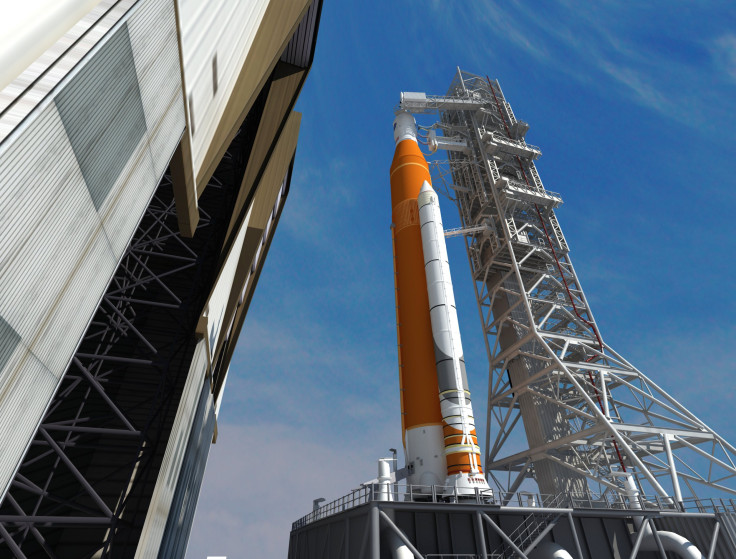NASA’s Mission To Mars: Despite Cost Overruns, Space Launch System Clears Another Hurdle

In another step toward realizing its ambitious plan to send manned missions to Mars in the 2030s, NASA announced Wednesday that it had successfully completed a comprehensive review of plans for its facilities and ground support at the Kennedy Space Center in Florida that would one day launch the Space Launch System (SLS) rocket and Orion spacecraft.
“NASA is developing and modernizing the ground systems at Kennedy to safely integrate Orion with SLS, move the vehicle to the pad, and successfully launch it into space,” Bill Hill, deputy associate administrator of NASA’s Exploration Systems Development Division at its headquarters in Washington, said in a statement. “Modernizing the ground systems for our journey to Mars also ensures long-term sustainability and affordability to meet future needs of the multi-use spaceport.”
The completion of the review, carried out over the course of a few months, paves the way for the SLS — the most powerful rocket the space agency has ever built — to be transported to the space center.
“Engineers are transforming Kennedy's launch infrastructure to support the SLS rocket and Orion spacecraft,” NASA said in the statement. “The Orion spacecraft will be fueled with propellants in the Multi-Payload Processing Facility at Kennedy prior to stacking atop the rocket. The launch team will use the new command and control system in the firing room as the clock counts down to liftoff of SLS’s first flight.”
The latest development comes just days after NASA test-fired the RS-25 rocket engine that would eventually power the gigantic successor to its Space Shuttle program. The engines that will be used on initial SLS missions will be the same that were used during 135 space shuttle missions by NASA between 1981 and 2011.
The SLS also passed a critical design review in October, becoming the first vehicle to have done so since the Saturn V — the rocket that was used to launch the Apollo missions. However, since then, the program has run into some snags.
A recent audit of the Spaceport Command and Control System (SCCS) — the software that will eventually that will control pumps, motors, valves, power supplies, and other ground equipment — found significant cost overruns in its development. According to the audit, conducted by the space agency’s inspector general, the total cost of development of the software is now expected to top $207 million — a rise of 77 percent over NASA’s 2012 projections.
“In the past, NASA has encountered difficulties with large and complex command and control software development efforts, failing on two occasions to meet expected requirements despite spending more than $500 million. In something of a repeat of this pattern, the SCCS development effort is more than 1 year behind schedule and significantly over cost, and several planned software capabilities have been deferred,” the audit found.
Although the audit suggested that the space agency use commercial software that is already available to companies like SpaceX, it noted a “reluctance” to change course within NASA, which, it added “reflects a cultural legacy at NASA of over-optimism and over-promising what the Agency can achieve in a specific timeframe.”
© Copyright IBTimes 2024. All rights reserved.






















